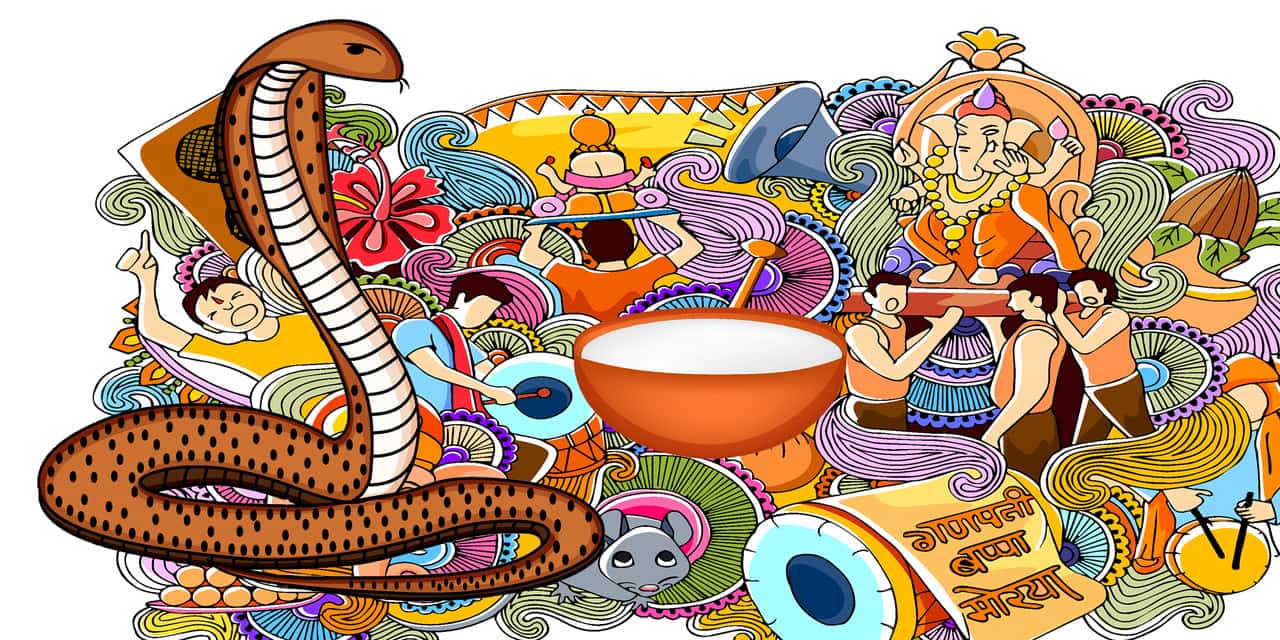
Celebrating Nag Panchami: Tradition, Beliefs, and Practices
Nag Panchami is an annual festival celebrated on Shrawan Shukla Panchami, where households honor serpents by placing snake images on their main doors and performing traditional rituals. This practice is rooted in the belief that it protects the household from harm caused by snakes, scorpions, and other creatures. Additionally, it is thought to offer protection from natural calamities like fire, storms, and lightning.
Historical Significance
The worship of snakes dates back to the Vedic era, where serpents were regarded as powerful and revered beings. According to Vedic traditions, snakes are considered the rulers of serpents. There is a belief that if serpents become displeased, it could lead to water scarcity. Therefore, the ritual of worshipping snakes is performed to maintain their favor. The Varaha Purana mentions a significant dialogue between Brahma and the serpent king on this day, further emphasizing the importance of Nag Panchami.
Cultural Beliefs and Practices
It is commonly believed that every household has a snake residing within its foundation. According to traditional beliefs, if the snake living beneath the house becomes angry, it could lead to the collapse of the foundation. This belief has given rise to the practice of snake worship on this auspicious day. Jyotish Pandit Surya Prasad Dhungel, Executive Director of the Nepal Panchang Nirnayak Vikas Samiti, notes that the entire day is suitable for placing snake images on doors as a protective measure.
In various locations across Nepal, such as Nagpokhari and Taudaha in Kathmandu, Siddhapokhari in Bhaktapur, and other snake shrines, special worship ceremonies are held. During these ceremonies, snakes are honored with offerings of cow’s milk, akshata (sacred rice), dubo grass, kheer (rice pudding), and roti (bread) as prasad.
Religious Significance
The worship of snakes as forms of Vishnu and Shiva has been a long-standing practice since the Vedic Sanatan era. Lord Shiva is often depicted with a snake garland, while Lord Vishnu is portrayed resting on the serpent Sheshnag, using its hood as a canopy. These depictions symbolize the divine connection with serpents and their revered status in Hinduism.
Various ancient texts, including the Puranas, recount stories of Lord Krishna subduing the serpent Kaliya in his childhood. Additionally, the statue of Buddha, regarded as the ninth incarnation of Vishnu, features a snake-shaped crown on its head. Matsyendranath is adorned with a garland of the Karkotak serpent, and Jain Tirthankaras are also depicted with serpent-shaped crowns.
Social Beliefs and Traditions
In many communities, it is believed that wherever snake worship takes place, the goddess Lakshmi, symbolizing prosperity, resides in that household.
Nag Panchami is surrounded by various legends explaining its origins and significance. Despite the existence of twelve names for snakes, the Vedic Sanatan tradition emphasizes the worship of eight specific serpents, known as Ashtanag. These eight serpents, Ananta, Vasuki, Padma, Mahapadma, Takshaka, Kulira, Karkotaka, and Shankha, are honored by Brahmin priests, and their images are placed above the doors of houses.
It is customary to avoid plowing fields or harming crawling creatures like snakes and serpents on Nag Panchami. This practice reflects a deep respect for nature and the creatures that inhabit it.
Environmental Importance
Professor Dr. Devmani Bhattarai of Valmiki Campus highlights the environmental significance of snake worship on Nag Panchami. He explains that snakes play a crucial role in maintaining ecological balance by consuming polluted air and venomous creatures. Understanding their role in the ecosystem, ancient sages designated Panchami as an auspicious day for snake worship to honor their contribution to nature’s welfare.


